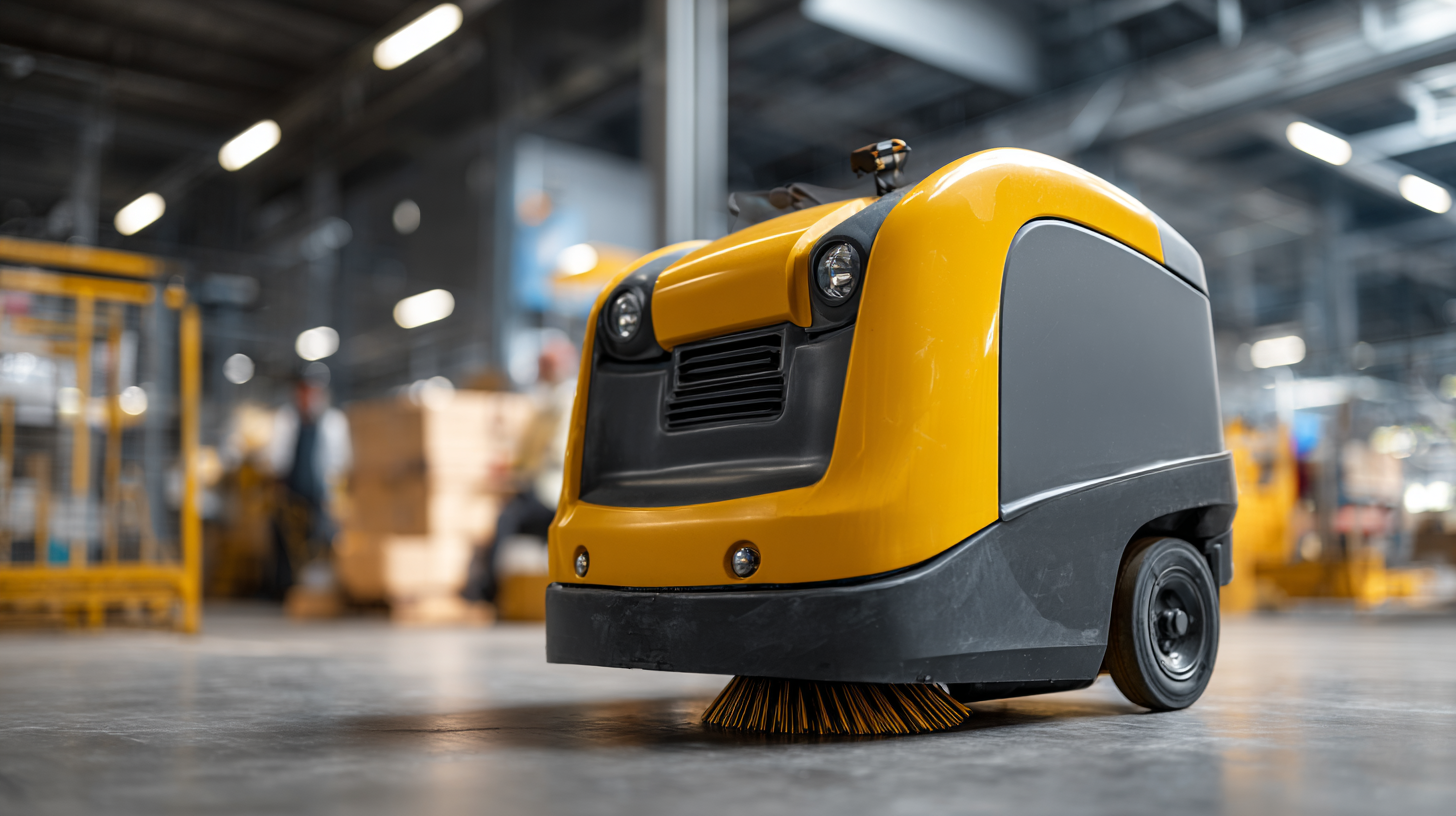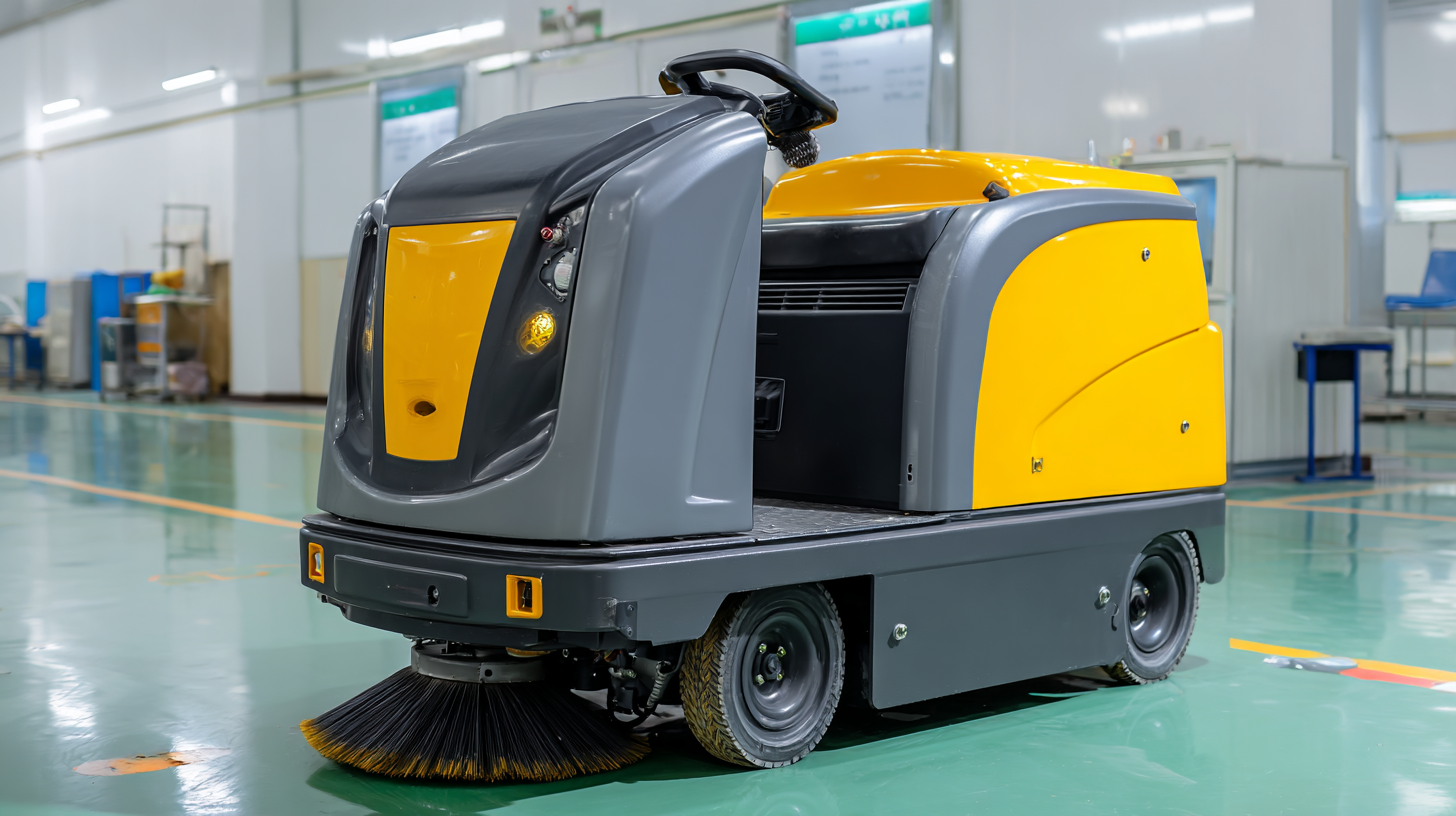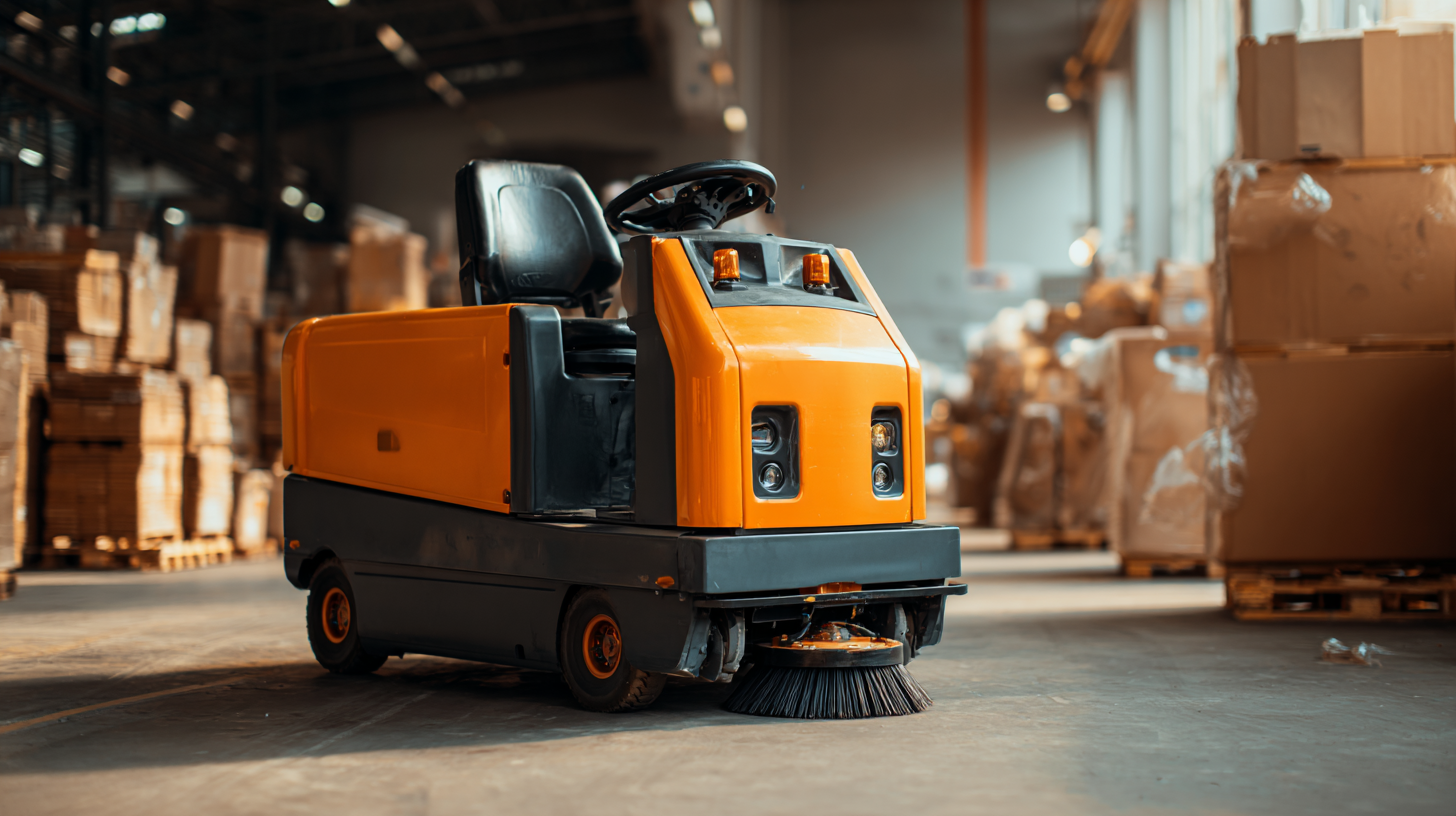Leave Your Message
As we approach 2025, the industrial cleaning sector is anticipated to undergo significant transformations, driven by advancements in technology and shifting operational needs. One key player in this evolution is the Electric Industrial Floor Sweeper, a tool that not only enhances efficiency but also ensures a cleaner and safer working environment. This blog will serve as a comprehensive checklist for businesses looking to navigate the upcoming trends in industrial cleaning. We will explore essential features to consider when selecting an Electric Industrial Floor Sweeper, the latest innovations that could impact your cleaning strategy, and how these trends align with sustainability efforts. By equipping yourself with the right knowledge, you can make informed decisions that will propel your cleaning operations into a successful and environmentally responsible future.

When choosing an electric floor sweeper, understanding the key characteristics that define high quality is essential for effective industrial cleaning. One of the most critical features is the sweeper's suction power. A powerful motor ensures that fine dust and larger debris are picked up efficiently, making it an invaluable tool in maintaining clean floors in warehouses, factories, and commercial spaces. Look for models with adjustable suction settings, allowing users to tailor the performance based on the specific cleaning task at hand.
Another significant characteristic to consider is the design and maneuverability of the sweeper. A well-designed sweeper should be lightweight yet sturdy, allowing for easy navigation around tight corners and obstacles. Additionally, ergonomic handles can reduce operator fatigue, enabling prolonged use without discomfort. Battery life is also a crucial factor; a high-quality electric floor sweeper should have a long-lasting battery that supports extended cleaning sessions without frequent recharging. Ultimately, investing in a sweeper with these essential features will enhance cleaning efficiency and productivity in any industrial environment.
In navigating the trends of industrial cleaning for 2025, the significance of manufacturer reputation cannot be overstated. A reputable manufacturer of electric floor sweepers not only provides high-quality products but also demonstrates a commitment to sustainability. A recent joint study from McKinsey and NielsenIQ highlights that consumers increasingly favor environmentally and socially responsible brands, with 65% expressing an intention to purchase such products. This shift in consumer preference emphasizes the necessity for manufacturers to align themselves with sustainable practices to maintain a competitive edge in the market.
Furthermore, the application of ozone as a powerful antimicrobial agent in industrial cleaning serves as a prime example of innovation driven by reputational awareness. Recent developments indicate that ozone can effectively decontaminate surfaces in various sectors, reinforcing the need for manufacturers to invest in cutting-edge technologies. According to industry reviews, the integration of big data in intelligent manufacturing decision-making is also on the rise, pushing companies to enhance operational efficiency while adhering to environmental standards.
Thus, manufacturers that focus on building a strong reputation by adopting sustainable and innovative practices are crucial for shaping the future of industrial cleaning.
As we head into 2025, the need for efficient and effective cleaning solutions in industrial settings is more critical than ever. Electric floor sweepers are becoming essential tools, offering a range of features designed to improve productivity and maintain cleanliness in large spaces. When selecting the best electric floor sweeper, consider key attributes that enhance performance and ease of use. One of the top features to prioritize is battery life; longer-lasting batteries enable operators to clean larger areas without frequent interruptions for charging. Additionally, look for models with advanced filtration systems that capture fine dust and allergens, promoting a healthier work environment.

Another important consideration is the versatility of the sweeper. Many modern electric floor sweepers come equipped with various settings to handle different surfaces, making them suitable for a range of environments from industrial warehouses to retail spaces. Features like adjustable suction power and brush height allow for tailored cleaning performance. Furthermore, ergonomic designs that promote user comfort and reduce fatigue ensure that operators can maintain high cleaning standards without compromising their well-being. By focusing on these critical features, businesses can invest wisely in electric floor sweepers that not only meet current cleaning demands but also adapt to future challenges.
In the evolving landscape of industrial cleaning, particularly in 2025, there is a marked emphasis on energy efficiency and sustainability in the selection of electric floor sweepers. As organizations increasingly pivot towards environmentally conscious practices, the demand for life cycle assessment (LCA) software is experiencing significant growth. This software enables companies to evaluate the sustainability of their products from conception to disposal, thus playing a crucial role in informing decisions that minimize environmental impact throughout the product life cycle.
The rise of LCA software in consumer goods segmentation not only assists businesses in achieving sustainability goals but also aligns with broader market trends focusing on energy-efficient technologies. As highlighted by the projected growth in the overall software market, expected to expand substantially by 2032, the impetus on environmental accountability is driving innovation and adoption. Companies that leverage LCA are better positioned to navigate the complexities of sustainability reporting and improve their operational practices, ensuring they remain competitive in an industry that is rapidly evolving towards sustainable solutions.
| Model | Power (W) | Battery Life (hrs) | Weight (kg) | Cleaning Width (cm) | Noise Level (dB) | Eco Rating |
|---|---|---|---|---|---|---|
| Model A | 600 | 5 | 8 | 40 | 65 | A+ |
| Model B | 700 | 6 | 9 | 50 | 68 | B |
| Model C | 550 | 4 | 7 | 35 | 70 | A |
| Model D | 800 | 7 | 10 | 55 | 64 | A++ |
In 2025, the industrial cleaning sector is set to witness a significant transformation driven by innovative technologies that are reshaping electric floor sweepers. One of the most exciting developments is the integration of smart sensors and IoT connectivity. These advanced features allow electric floor sweepers to assess the cleanliness of a space in real time, adjusting their operation accordingly. This not only optimizes cleaning efficiency but also reduces energy consumption, making it an eco-friendly choice for businesses looking to minimize their carbon footprint.

Another pivotal trend is the incorporation of artificial intelligence (AI) into the design of electric floor sweepers. With AI, these machines can learn from their environments, improving their cleaning routes and identifying high-traffic areas that require more attention. The result is a highly efficient cleaning process that saves time and labor costs. Furthermore, innovations in battery technology enable these sweepers to operate longer on a single charge, ensuring less downtime and uninterrupted service. As we navigate these trends, it is clear that the future of industrial cleaning is not just about maintenance; it’s about leveraging cutting-edge technology to achieve smarter, more sustainable operations.
